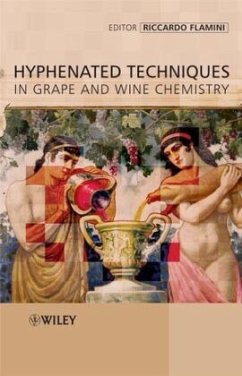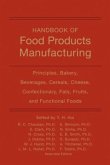This book presents the principal modern applications of hyphenated techniques used in the analysis and study of grape, wine, and grape-derivative products chemistry. Applications are performed by the use of techniques such as liquid- and gas-phase chromatography (LC, GC) and capillary electrophoresis (CE) coupled with spectrophotometric detectors (UV, DAD, FL), mass spectrometry (MS), detectors for gas chromatography (FID, ECD), and inductively coupled plasma-mass spectrometry (ICP-MS). These applications to oenology are described with particular attention to methods developed by instrumentation usually present in the laboratory, and with the better performances and reliability. Also principal applications of modern sample preparation methods, such as solid-phase-extraction and solid-phase-microextraction (SPME, SPE) in the oenology field, are described. At the end of each chapter the principal literature on the topic, is reported.
A number of methods are presented for a complete study of the high complex grape and wine chemistry, by analysis of classes of compounds such as organic acids, sugars, hydroxycinnamiltartaric acids, carbonyl compounds, proteins, resveratrol and piceatannol, polyphenols such as anthocyanins and derivatives, flavonols, flavanols and proanthocyanidins, volatile compounds such as esters, alcohols, phenols, monoterpenes and sulphur compounds, contaminants such as ochratoxin A (OTA), biogenic amines, ethylphenols, chloroanisoles, pesticide residues, elements and inorganic anions.
This volume is intended not only as a guide for research and quality control laboratories, but also as an up-to-date source for students beginning work in the field of oenological analytical chemistry.
Hinweis: Dieser Artikel kann nur an eine deutsche Lieferadresse ausgeliefert werden.
A number of methods are presented for a complete study of the high complex grape and wine chemistry, by analysis of classes of compounds such as organic acids, sugars, hydroxycinnamiltartaric acids, carbonyl compounds, proteins, resveratrol and piceatannol, polyphenols such as anthocyanins and derivatives, flavonols, flavanols and proanthocyanidins, volatile compounds such as esters, alcohols, phenols, monoterpenes and sulphur compounds, contaminants such as ochratoxin A (OTA), biogenic amines, ethylphenols, chloroanisoles, pesticide residues, elements and inorganic anions.
This volume is intended not only as a guide for research and quality control laboratories, but also as an up-to-date source for students beginning work in the field of oenological analytical chemistry.
Hinweis: Dieser Artikel kann nur an eine deutsche Lieferadresse ausgeliefert werden.








